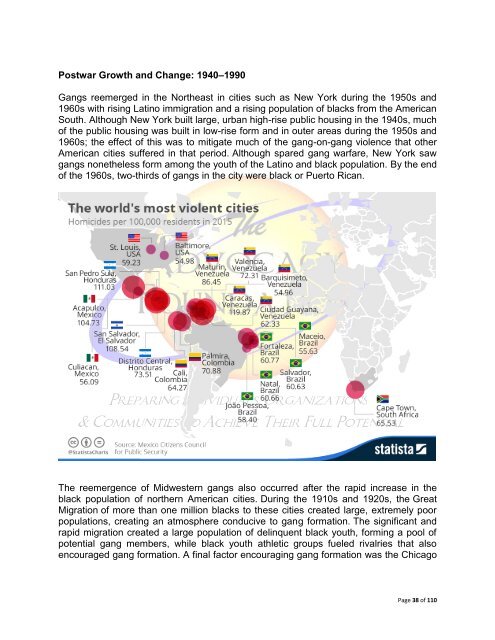Gang Deconstruction
Gang Deconstruction
Gang Deconstruction
You also want an ePaper? Increase the reach of your titles
YUMPU automatically turns print PDFs into web optimized ePapers that Google loves.
Postwar Growth and Change: 1940–1990<br />
<strong>Gang</strong>s reemerged in the Northeast in cities such as New York during the 1950s and<br />
1960s with rising Latino immigration and a rising population of blacks from the American<br />
South. Although New York built large, urban high-rise public housing in the 1940s, much<br />
of the public housing was built in low-rise form and in outer areas during the 1950s and<br />
1960s; the effect of this was to mitigate much of the gang-on-gang violence that other<br />
American cities suffered in that period. Although spared gang warfare, New York saw<br />
gangs nonetheless form among the youth of the Latino and black population. By the end<br />
of the 1960s, two-thirds of gangs in the city were black or Puerto Rican.<br />
The reemergence of Midwestern gangs also occurred after the rapid increase in the<br />
black population of northern American cities. During the 1910s and 1920s, the Great<br />
Migration of more than one million blacks to these cities created large, extremely poor<br />
populations, creating an atmosphere conducive to gang formation. The significant and<br />
rapid migration created a large population of delinquent black youth, forming a pool of<br />
potential gang members, while black youth athletic groups fueled rivalries that also<br />
encouraged gang formation. A final factor encouraging gang formation was the Chicago<br />
Page 38 of 110

















